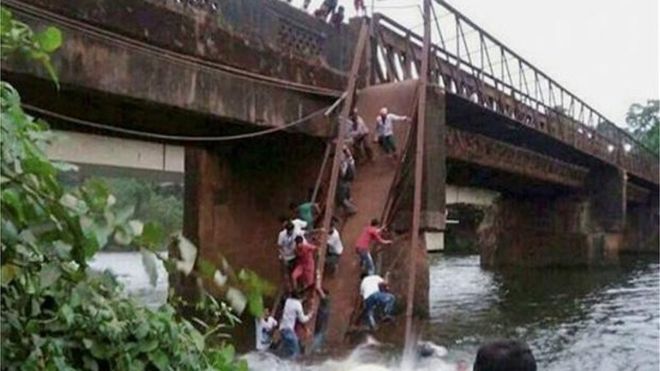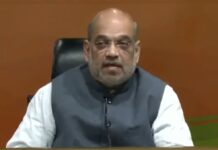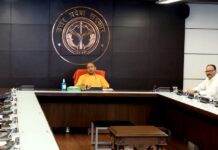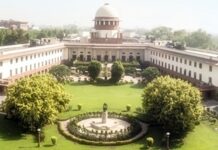This story of bridge collapse is totally different from other incidents happened in India. On Thursday, a woman was trying to commit suicide by jumping into the water of Sanvordem River. At least fifty people were standing on the bridge above the river after they spotted the woman trying to commit suicide. The bridge could not take the load of those gathered onlookers and collapse.
According to Goa MP Savaikar, “The old bridge was barricaded as it was weak. The rescue team was under way for the woman who had jumped from the parallel bridge. The onlookers gathered on the weaker bridge and did not ensure its ability. Rescue operations are under way”.
Crocodiles in the river obstructed the rescue operation. But the Indian Navy divers and Indian Coast Guard personnel struggled to reach the deeper areas. At least 2 people died and around 15 others went missing after the bridge connecting Sanvordem and Curchorem villages gave way on Thursday. The incident took place almost in the evening. Hence there was already no light and to make it worse the river also has crocodiles in it. The divers could not go to the deep areas and therefore they had to halt the mission till morning. The Collector of South Goa Mr. Swapnil Naik said that the rescue operation was launched again today at around 7 am in the morning with the help of Chetak helicopters. Also, an aerial inspection was done. Till now close to 15 people are missing.
This is the background of the incident, but within a day, the mind game of people and administration has been changed. Now the narrative has changed. The incident is no longer about a bridge that collapsed in Goa but about a Portuguese-era bridge that collapsed in Goa. Every report on the incident began with the words ‘Portuguese-era Bridge’. The difference is so subtle that it goes unnoticed. Mind games are at play because, after the bridge collapse, the idea has been firmly but subtly planted in people’s minds that the bridge was from the time of Portuguese era – meaning – it was not built by Indian, and it was old. Hence it is not the fault of India and not the fault of the current administration.
The blame has been deflected beautifully. Since 1960 the bridge has been Indian, but when it collapsed it was the fault of its Portuguese pedigree.
Like a good clerk and a good data entry operator, the journalists are typing out whatever is being fed by the local or central administration. No questions are being thrown at them. The media willingly bends over to become an extension of the system. They speak in the language of the administration, which defines as the truth. The consequence of the incident is little but the consequence of the news is very high, which is a sad indicator of the abdication of journalistic ethics by mainstream media and in particular by the television media in the country.




